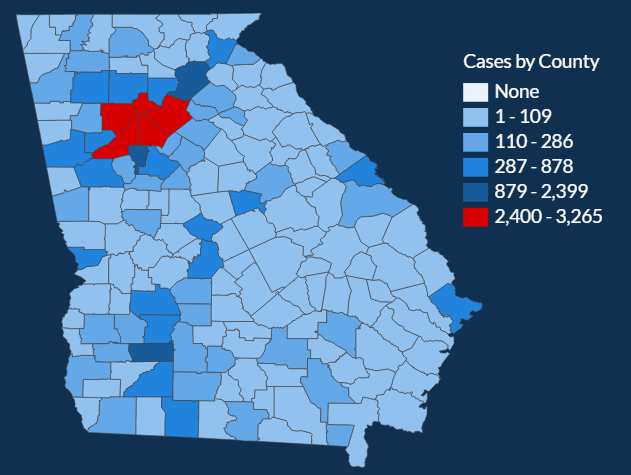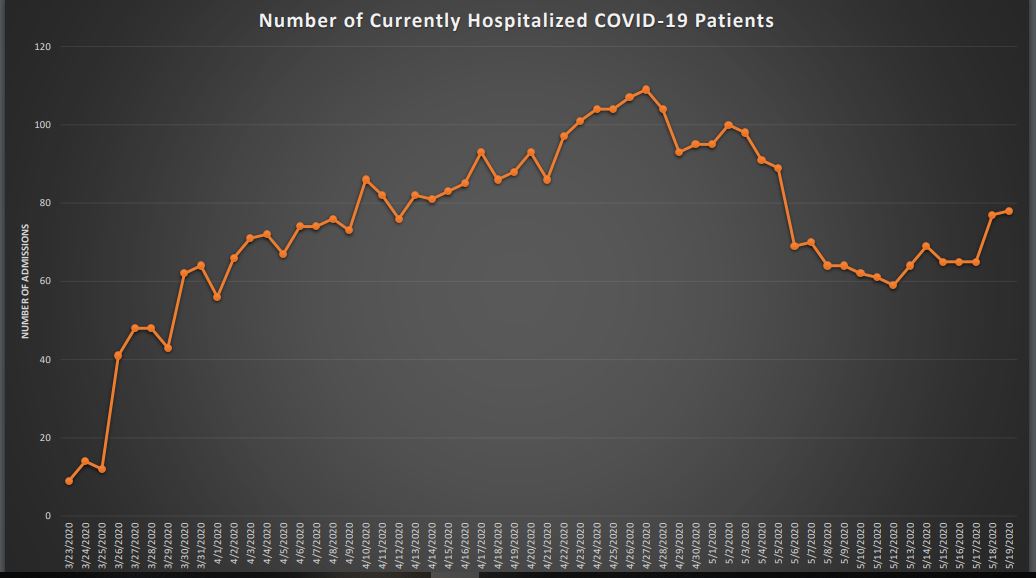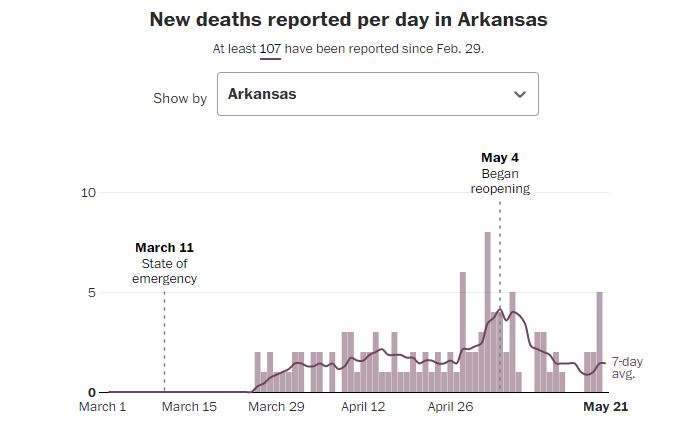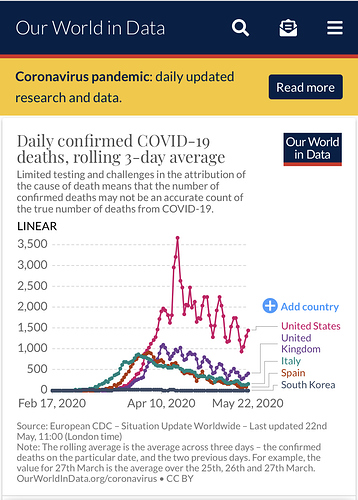Jane, yes - ‘Midtown’ Atlanta, just a couple miles from Downtown. It was a subject of considerable mirth that the first things opened up were “essential” tattoo shops, massage parlors, bowling alleys and nail salons. 
While I haven’t paid as close attention to other states, I think Georgia and Florida are the worst for lack of transparency and attempts to delay or hide data. The GA Department of Health has had multiple incidents of quickly-spotted attempts to mislead people, to an often goofily amateurish extent.
Aside from all that, agreed that things have not changed much at all. I can’t tell that they’re any different from how they would be were restrictions not lifted. Things have really been ‘smooth’ all along, the ‘weekend effect’ of low reporting and the vagaries of DPH data notwithstanding. Tell you what - the streets are still empty here - I don’t think the lifting of restrictions has yet made much difference.
Texas and Arkansas too - I see all these states as being early in a greatly-flattened first wave of the virus. Arkansas’ death numbers are so low that I think it’s too early to draw any conclusions except that the virus is moving very slowly.

In Georgia, the Atlanta area is a mini ‘New York City,’ relative to the rest of the state. One thing we know now more than ever is that population density makes an enormous difference. Things moving much more slowly outside of dense urban areas seems to be the rule.
In most of the U.S., this has thus far meant relatively small death numbers.
Honestly - right now I don’t know what to think. Things going really slow is good, from the standpoint that we are (hopefully) heading for a vaccine. But Georgia’s testing is not encouraging. (Here too, a clownish attempt by the Governor/Department of Health to mislead people - antibody tests were being added to virus tests, making the total number of tests larger, but positive antibody tests were not added to the ‘positive tests’ number, in an effort to make the % positives misleadingly small.)
Anyway, the state says that 3.8% of the population has been tested, and that <0.4% have been positive, thus far. Maybe that last one should be a little higher, because of the data shenanigans, but it’s still not going to be much at all.
Why this bothers me is because Georgia, and Arkansas and Texas too, don’t have a significantly lesser percentage of people that we know are more-vulnerable to the virus - old people, fat people, those with existing diseases. I was looking at West Virginia - with all of 70 deaths right now. WV is #3 in the U.S. for the percentage of the population being 65 years old or more, and #1 for obesity and #1 for diabetes.
Is there a reason to think that the lethality of the virus is going to be meaningfully less in these states than in NY or NJ, for example?
Texas is big and spread-out, but still has large, relatively densely-populated urban areas. I think it’s a smaller version of Brasil (which certainly bears watching right now). New York’s death rate has declined more than 80% from its peak, but there were still 1180 deaths in the last week. Even if we ‘freeze’ NY’s deaths right now, these other states have a lot of catching up to do.
To get to an equivalent percentage:
Georgia would have 9 times as many deaths as at present.
Florida, 15 times.
Texas, 30 times.
West Virginia, 39 times.
Arkansas, 42 times.





 ) and our week over week hospitalizations are down 7.7% according to today’s paper.
) and our week over week hospitalizations are down 7.7% according to today’s paper.

